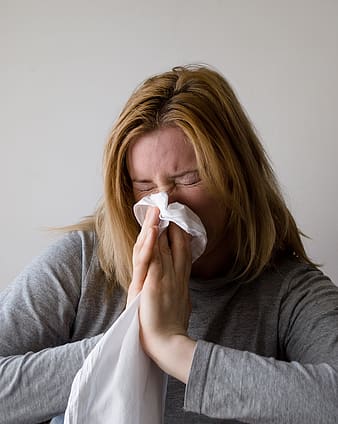Is your bed causing your allergy symptoms?
Millions of Australians suffer from allergy symptoms, with the change in season and associated increased pollen count often being blamed. But the source of your allergies may be much closer to home than you realise.

What are allergies?
When your body overreacts to a substance that is harmless to most people, an allergic reaction, or allergy, occurs. These substances are often referred to as allergens or ‘triggers’ — because they are known to trigger an allergic reaction. One of the most common examples of allergies is hay fever.
Hay fever is a common allergy that affects millions of Australians. People with hay fever are allergic to these substances such as dirt, dust and pollens. When exposed to these allergens the body launches an ‘attack’ on them, inflaming the nasal passages and producing more mucus.
What are allergy symptoms?
Signs and symptoms of hay fever usually begin soon after you have been exposed to the allergen. Typical symptoms include sneezing and runny nose, congestion, cough, itchy eyes or nose, watery eyes.
The symptoms and severity of allergy are usually different for everyone.
What causes allergies?
Allergies can be seasonal or occur all year round. Common triggers for season allergy include:
- Tree pollen, common in the spring
- Grass pollen, common in late spring and summer
- Spores from fungi and moulds — can be worse during warmer months
Common triggers for year-round hay fever include:
- Animal dander (from the skin, hair or feathers of animals)
- Dust mites (contained in house dust)
- Cockroaches
- Spores from indoor and outdoor fungi and moulds.
How can your bed contribute to allergies?
Believe it or not, your bed could be a haven for allergy triggers. Every day we shed hundreds of millions of cells, which dust mites love to feed on. Unwashed bedding makes the perfect breeding ground for these to multiply quickly.
In addition to skin cells and dust mites, our bedding can also contain traces of pollen, fungi and mould, along with pet dander. Snuggling up to this every night can lead to hay fever, asthma, coughing and other symptoms of allergy.
What can you do?
While you’ll never be completely free of dust mites, cutting back their numbers can prevent or greatly reduce the likelihood of allergic reactions. Here are our top tips:
DO:
- Wash your sheets once a week
- Wash your blankets every fortnight
- Wash your pillows and doonas at least twice a year
- Wash in water greater than 60⁰C in order to kill the dust mites
- Hang sheets in the sun as it also helps to kill dust mites
- Replace old mattresses and pillows as these can also harbour dust mites
DON’T:
- Make your bed as soon as you get up. Let it air, as moisture and warmth trapped in your bed provides the perfect environment for dust mites.
- Sleep with your pets if you have severe allergies
Need a new mattress?
At BedGuard we have a range of mattresses to suit all ages. All our mattresses are waterproof and repel liquid, odour, stains and bedbugs. They are also antibacterial, hypo-allergenic and dust mite resistant, meaning you can rest peacefully at night, knowing your mattress isn’t going to cause any allergic reactions.
We have mattresses to suit everyone, including bariatric mattresses, so come in store or browse online today.





